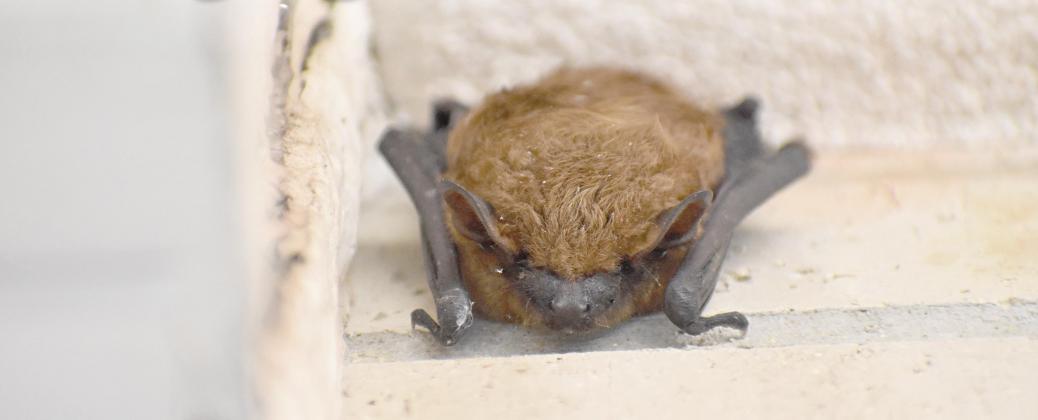Harvey, the courthouse’s big brown bat
Whether people are coming to the Lincoln County Courthouse to file a marriage license or show up for court, they all have something in common.
They are all being watched.
By a silent, watchful eye wrapped in a fur coat.
On the northeast entrance of the Lincoln County Courthouse, a big brown bat named Harvey hangs outside the door.
Lincoln County Sheriff Deputy Kevin Chapman noticed the this big brown bat back four months ago, at the end of October.
“He’s been here for a while,” Chapman said.
First Deputy Court Clerk Kris Hammock said she was talking with Chapman about the bat when the name Harvey just popped into her head.
“He’s our mascot,” she said.
Hammock said when she worked for the Oklahoman, there was a bat that hung above her car in the parking garage. She named it Charlie and said she felt this bat also needed a name.
According to the Oklahoma Department of Wildlife Conservation Wildlife Diversity Biologist Melynda Hickman, the big brown bat is common in Oklahoma.
“They’re found almost all over the state except for southwest Oklahoma,” she said.
According to Hickman, there are 24 different species and sub species of bats in Oklahoma
“Which is pretty impressive because there’s 45 in the country,” she said. “So we have right around half of the numbers occur in Oklahoma.”
Hickman said big brown bats are not dangerous to humans.
“It’s like any wildlife, you don’t want to touch unless you’ve got gloves on,” she said. “There’s no threat unless you aggravate it or pick it up with your bare hands, which you shouldn’t do with any wildlife.” Up in the north, big brown
Up in the north, big brown bats will hibernate, however here in Oklahoma with the fluctuating temperatures, Hickman said big brown bats are more active.
Hickman said due to their high metabolism, big brown bats can’t go long without food if they’re not in hibernation. “Whatever will fit in
“Whatever will fit in their mouth, they will consume,” she said.
Hickman said big brown bats are more active during the wintertime.
“It hunts on the level above the ground where the mosquitos are more prevalent,” she said.
“They do a nice job of helping with mosquito control. Other bats hunt at different heights above the ground.”
Hickman said they eat flying insects like moths or mosquitos.
“The big brown does have pretty strong jaw muscles because one of their favorite foods in the summertime are beetles,” she said.
The wings of a beetle are made up of the same material of human fingernails. In order to eat the beetle, they big brown bat has to have the jaw strength to tear through their wings.
Will Harvey return next winter? Possibly.
“They have what is known as site fidelity,” Hickman said. “They do tend to return to a location that that offered up everything they needed to survive.
The big brown bat is a solitary bat, meaning it hangs alone instead of in a group.
“Most bats are smaller than people think,” she said.
Harvey is about four inches in length, which Hickman said means the wingspan is around 14 inches.
Big brown bats can range up to five inches with a wingspan of 16 inches.
Hickman said this is a reflection of the gender and that females tend to be larger since they carry and look after the pup.
The wings of a bat, although similar to leather, is a membrane which is attached to their tail and assists them in flying. Hickman said the membrane can heal itself if it is damaged or torn.
On average, bats can live up to 12 to 15 years.
Hickman said they are prey to black rat snakes, owls and raccoons.
“They don’t have a lot of predators, which is kind of nice,” she said.

